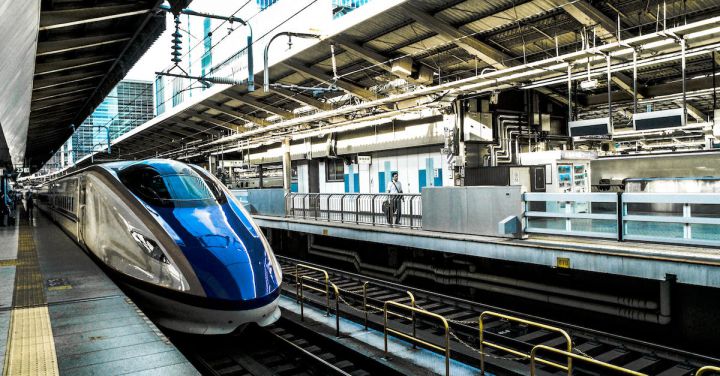When it comes to revolutionizing transportation, few innovations have had the impact of the Shinkansen, more commonly known as the Bullet Train. Since its introduction in 1964, this high-speed rail system has broken barriers and set new standards for efficiency, safety, and comfort. Let’s delve into the fascinating story behind this iconic mode of transportation.
The development of the Shinkansen was a response to Japan’s growing need for a reliable and fast transportation system. In the 1950s, the country was experiencing a period of rapid economic growth, and traditional train systems were struggling to keep up with the demands of an increasingly urbanized population. The government recognized the need for a new approach, one that would not only improve transportation but also showcase Japan’s technological prowess to the world.
To achieve this vision, a team of engineers and designers was assembled, led by Hideo Shima. Their goal was to create a train that could travel at speeds of over 200 kilometers per hour, a feat that seemed almost impossible at the time. However, through meticulous planning and innovative engineering, they were able to overcome the technical challenges and bring their dream to life.
On October 1, 1964, the first Shinkansen line, connecting Tokyo and Osaka, was inaugurated. The train, aptly named the “0 series,” was an instant success. Passengers marveled at its smooth and quiet operation, a stark contrast to the rattling and jolting experienced on traditional trains. The Shinkansen had truly raised the bar for train travel.
One of the key factors behind the success of the Shinkansen is its dedicated infrastructure. Unlike traditional trains that share tracks with other vehicles, the Bullet Train operates on its own exclusive lines. This allows it to reach higher speeds and maintain a high level of safety. The tracks are also designed to minimize noise and vibration, ensuring a comfortable experience for passengers.
Another breakthrough feature of the Shinkansen is its punctuality. With an average delay of just seconds per trip, the Bullet Train has become synonymous with reliability. This is made possible by a combination of advanced signaling systems and strict adherence to schedules. Passengers can plan their journeys with confidence, knowing that the train will arrive and depart precisely on time.
But perhaps the most impressive aspect of the Shinkansen is its safety record. Despite carrying millions of passengers each year, there has never been a single passenger fatality due to a derailment or collision. This is a testament to the rigorous maintenance and inspection procedures that are carried out daily. The Bullet Train has set the standard for safety in the rail industry.
Over the years, the Shinkansen network has expanded, connecting major cities and regions across Japan. New generations of trains have been introduced, each one faster, more comfortable, and more environmentally friendly than its predecessor. The latest addition to the fleet, the N700S, boasts a top speed of 300 kilometers per hour and features energy-saving technologies such as regenerative braking.
The impact of the Shinkansen extends beyond Japan’s borders. Its success has inspired other countries to develop their own high-speed rail systems, from Europe’s TGV to China’s Fuxing Hao. The Bullet Train has truly broken barriers and set new standards for transportation worldwide.
In conclusion, the Shinkansen is not just a train; it is a symbol of Japan’s innovative spirit and commitment to excellence. Its revolutionary design, unrivaled speed, and impeccable safety record have made it a global icon. As we look to the future, it is clear that the Bullet Train will continue to shape the way we travel, breaking barriers and connecting people like never before.
